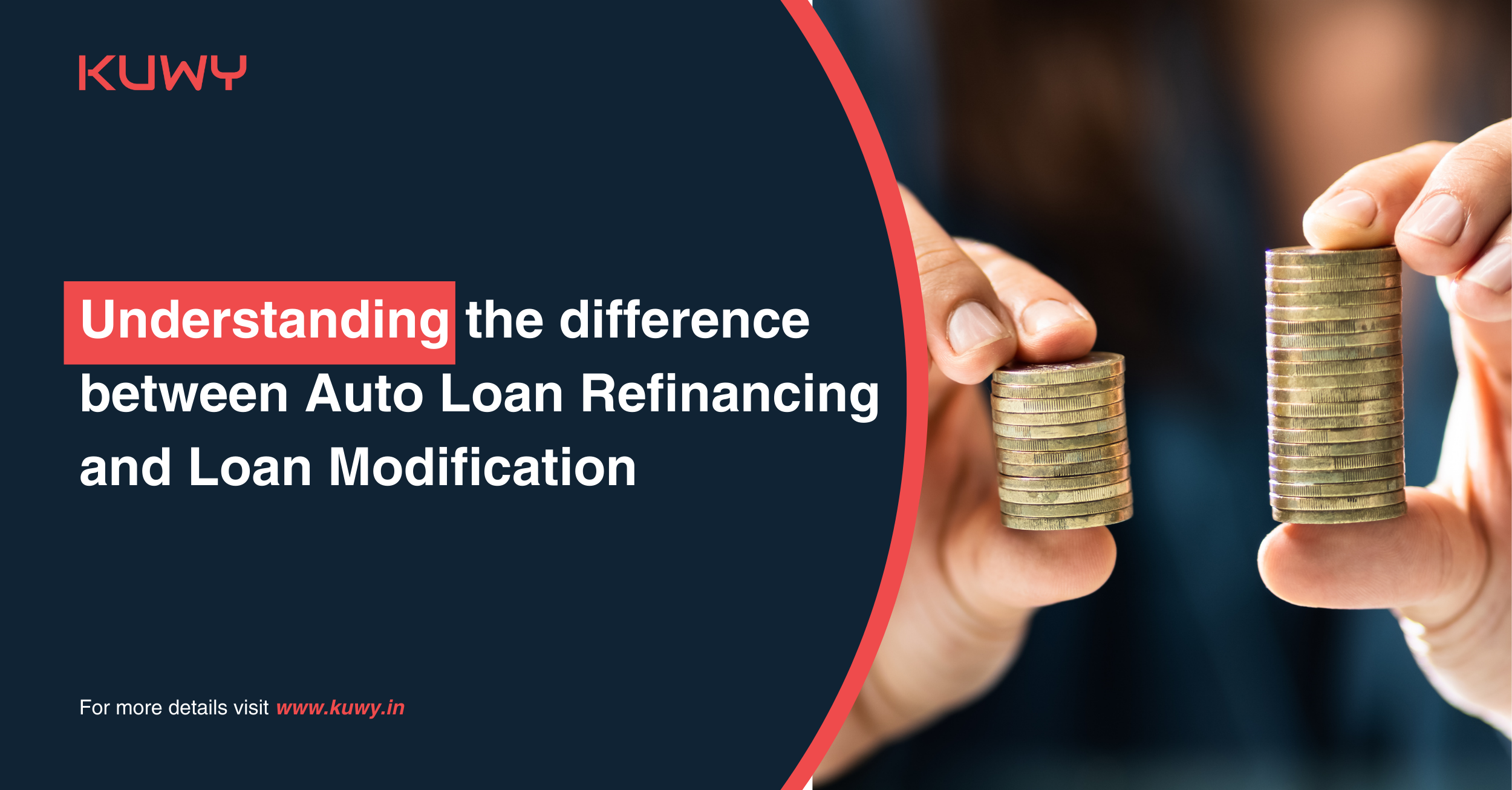Auto loan refinancing and loan modification are two popular possibilities that can assist borrowers in managing their loan commitments. It's important to comprehend the main distinctions between the two. We will examine the concepts of loan modifications and auto loan refinancing in this blog, as well as their goals, procedures, and potential effects on borrowers. Those confused can decide which strategy is best for them by acquiring a thorough understanding of each choice.
Refinancing a vehicle loan involves replacing your current loan with a new one, usually from a different lender. Refinancing is done to get better loan terms, including a reduced interest rate, a longer payback time, or both. When a borrower applies for a refinance of a car loan, a new lender considers both the borrower's creditworthiness and the value of the vehicle. If accepted, the new lender pays off the previous loan, and the borrower starts repaying the new loan following the modified conditions. Credit Score plays a vital role here. Refinancing an auto loan may benefit the borrower. If payments are completed consistently, it can cut monthly payments, boost credit scores, give borrowers access to superior customer care, and perhaps free them from co-signer restrictions. It's crucial to take into account any additional costs, such as loan origination fees, as they may have an impact on the overall cost reduction.
The procedure of loan modification for an auto loan, on the other hand, alters the conditions of an existing loan agreement. Loan modifications typically refer to changes made to auto loans to suit borrowers who are experiencing financial difficulties. Loan modification's major goal is to make the loan more affordable for borrowers who are struggling to fulfil their payment requirements. This may include lowering the interest rate, extending the loan term, or forgiving part of the outstanding sum. Typically, the borrower initiates loan modification in partnership with the lender. The borrower must demonstrate financial hardship and offer documents to back it up. The lender examines the borrower's financial status to see if a modification is possible. If the loan is authorised, the loan terms are changed to allow the borrower to make lower instalments. To agree or not depends totally on the borrower and he decides the new terms as per his choice. Borrowers encountering financial difficulties can benefit from a loan modification, which can provide temporary or permanent support. It can help you avoid default or repossession, enhance your affordability, and perhaps protect your credit score. However, loan modifications may have an initial impact on credit scores, and there may be administrative expenses involved with the modification procedure.
While both auto loan refinancing and loan modification aim to relieve financial stress, there are lots of significant distinctions between the two:
- Refinancing is generally concerned with obtaining better loan terms to save money, whereas loan modification is concerned with addressing financial difficulty by modifying the existing loan terms.
- A loan modification is more typically granted to debtors experiencing financial difficulties or facing imminent default, whereas refinancing normally requires a solid credit score and a stable financial profile.
- Auto loan refinancing frequently means replacing an existing loan with a new loan from a different lender, whereas loan modification modifies the conditions of an existing loan with the same lender.
- Refinancing can offer long-term benefits such as cheaper interest payments and higher credit scores, however, loan modification can be a temporary solution with short-term credit score consequences.
Understanding the distinctions between auto loan refinancing and loan modification is critical for borrowers looking for ways to adapt their loan responsibilities to their financial situation. Loan modification targets urgent financial concerns, whereas refinancing focuses on achieving better terms and long-term savings. Each option has its own set of advantages and disadvantages, and it's critical to weigh an individual's personal needs, financial circumstances, and eligibility before making a choice. This allows a person to select the choice that best matches their goals and assists them in properly navigating their auto loan responsibilities. This blog does not give much value to the demerits of the two so do know them as well before making a decision.
Happy and Fun Learning!




